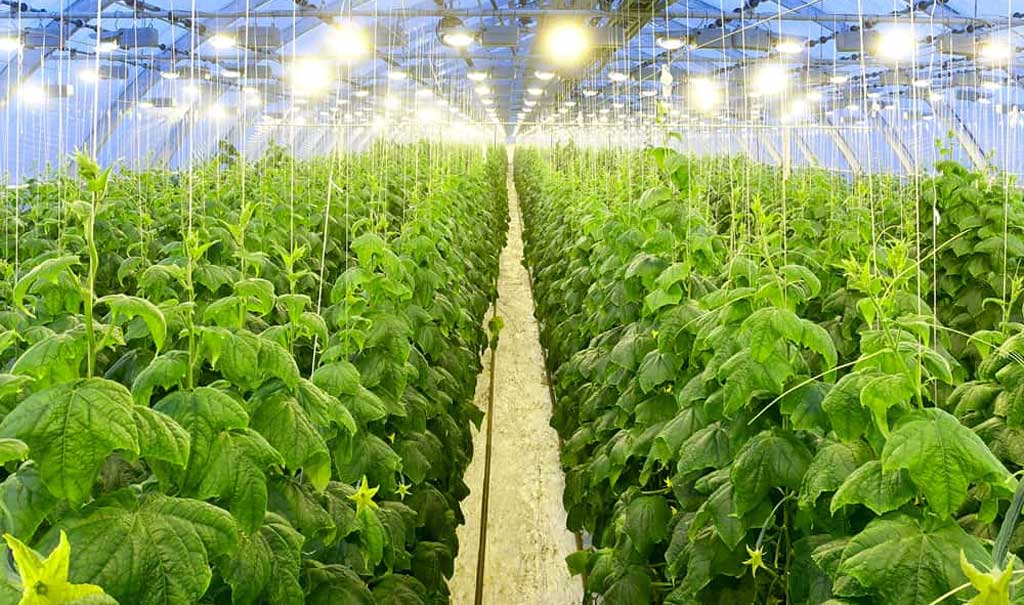Indoor cultivation of any type of crop requires management of many more variables than traditional outdoor cultivation. This is great for professional growers because of the finely tuned control mechanisms, but it comes with its share of challenges to get the specs just right. Indoor growing with LED lighting gives cultivators a strong tool to manage some of the more important variables for better plant growth and crop yields, including heat, light intensity, and spectrum specification.
Factors of Indoor Growing with LED Lighting
- Proximity of LED Light Fixtures to Plants
The ideal distance between a light fixture and a plant will be a function of the plant’s growing needs. Unlike traditional indoor grow light sources, LEDs operate at lower physical temperatures, which allows them to be mounted closer to plants. That proximity can improve photosynthetic photon flux density (PPFD), which is a measure of the total amount of light that reaches a defined area of a plant’s surface. As plants grow, a cultivator may need to reconfigure fixture placement. Selecting an indoor growing system that can be easily reconfigured will make the cultivator’s job more manageable. OpticPAR lighting fixtures offer even less heat output than traditional LED fixtures, thanks to the robust heat sink built right into the fixture, and offer easy mounting configurations for gradually changing the fixture proximity to the plants as they grow.
- Temperature and Humidity Control
Because of an LED’s lower physical operating temperatures, indoor growing with LED lighting will not raise ambient temperatures or place as much stress on hydration systems as traditional indoor lighting sources. Cultivators should remain aware of this and adjust their temperature and watering schedules to account for the unique heat signatures of LED lighting. Our Canna fixture features over 70 square feet of double folded aluminum fins built into the housing to dramatically decrease heat output in controlled growing operations.
- Spectral Characteristics
All green plants produce chlorophyll when exposed to light sources, and that chlorophyll feeds the plant as it moves through its growing cycle. Chlorophyll is present in two primary forms, chlorophyll A and B, as well as in several other secondary forms. Other components in a plant’s vegetation affect how and when the plant uses chlorophyll to enhance its growth.
In their early stages of growth, many plant varietals rely more on chlorophyll A to produce larger amounts of leafy vegetation. Chlorophyll A responds best to visible light in the red to violet spectrum with wavelengths between 430 and 600 nm. As a plant grows and approaches its budding phase, an indoor cultivator might need to adjust a light source’s spectral characteristics to better promote bud formation. OpticPARTM fixtures are designed with a color spectrum that’s ideal for plants throughout the grow cycle, closely mirroring the available PAR from natural sunlight, which means no need to change the spectrum at any point in the cycle.
- Grow Light Cycles
Plants need down time when they are not exposed to light. When the amount of daily light exposure is reduced, a plant’s internal receptors will also send signals to the plant to shift from vegetation growth to budding. LED grow lights give indoor plant cultivators the best opportunity to turn lighting on and off with no warm up time and to control exactly how much time their plants are exposed to light every day.
- Choose the Right System for the Facility
Indoor growing facilities come in a variety of shapes and configurations. Selecting the system that coincides with the facility will make indoor growing with LEDs significantly more effective. SpecGrade LED offers a variety of different lines of LED grow lighting systems, all of which include our unique OpticPARTM Technology that improves lighting conditions in any cultivation facility. We specifically offer our Canna line for large indoor growing facilities, the Linea line for linear greenhouses, and our Verta line for vertical growing structures. Each of these systems gives cultivators full control over fixture placement, lighting spectral characteristics, and grow light cycling and provides easy long term maintenance thanks to a modular design with interchangeable parts.


